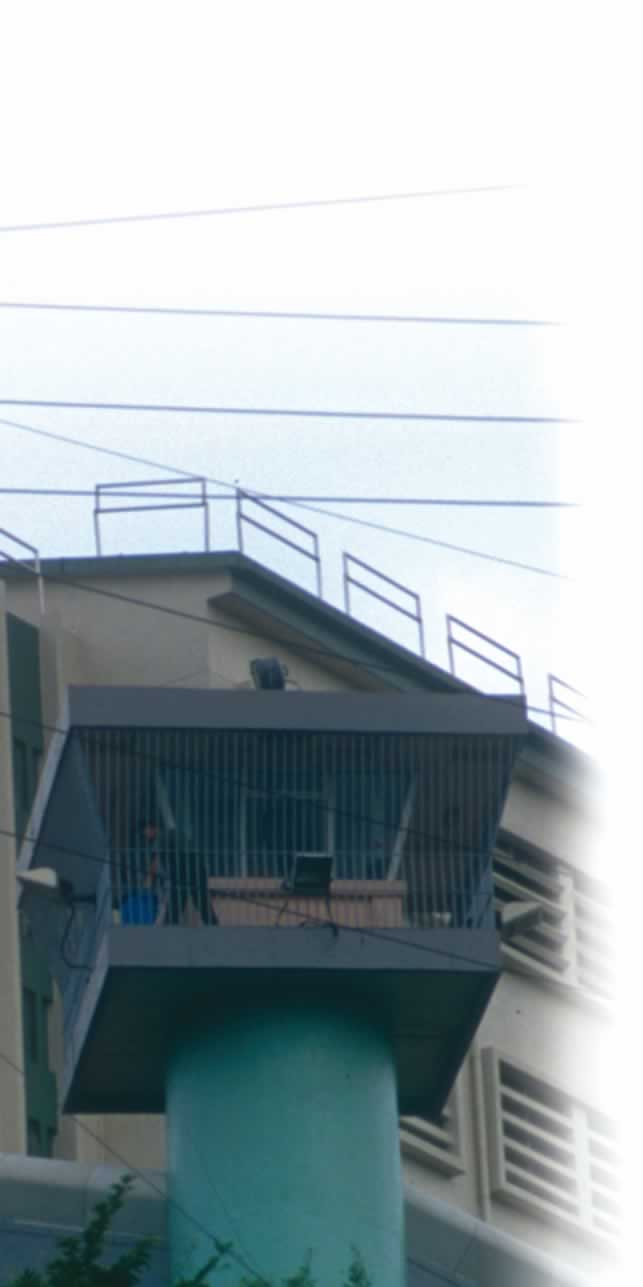Annals of crimeLife behind bars
By Emily Lai
It started when he was brought from a truck to a cell in the Lai Chi Kok Reception Center.
This is how Danny Pun (not his real name) began his life in prison. He waited at the center until the court declared a 20-month imprisonment in Stanley Prison for selling pirated videocassette discs.
There are 24 correctional institutions with more than 12,000 prisoners in Hong Kong. Every newly admitted prisoner has to pass a health test, in which the whole body, including the rectum, is checked.
“It hurts our dignity much more than the body,” said Mr. Pun.
The prisoners do not need to work for the first few weeks.
After that, light work is given to the “white hands” — people who commit crimes for the first time — whereas heavier tasks are assigned to the “black hands”. Prisoners earn salaries. These vary from $50 to $450 per hour, according to the difficulty of the tasks.
Entertainment in jail is usually watching television in canteens. However, prisoners can have, in Mr. Pun’s words, a “fresh hour” at the basketball court every day.
Gambling, though restricted, is the prisoners’ favorite activity. They secretly form groups and take turns to host games. If they get caught, they are deprived of treats like having a chicken drumstick during a festival.
“Life in jail is dull, but not as horrible as some people think,” said Mr. Pun.
In reality, jail life is not as dramatic as in films, but Mr. Pun confirmed that Triads dominate the social life. The Triad leaders are regarded as the “underground government”.
Ah-To (not his real name), a discharged prisoner, recalled that a young prisoner was forced to swallow oil and soy sauce because he picked up a cigarette on the floor.
According to the Hong Kong Correctional Services Department, there were 21 cases of serious unrest and nearly 7,500 cases of disciplinary action in 2001.
Confrontations include those involving members of the department.
At present, the prisoners have to complain through the chief security officer. Mr. Pun said that the officers protect each other.
A spokesperson for the department said there are enough channels for complaints. They include the justices of peace, Legco members, and six other channels.
Despite the confrontations inside the jail, Ah-To found that life outside prison was more problematic.
Unable to find a job and a place to live, Ah-To had to sleep on the streets.
The Correctional Services Department provides rehabilitation services such as its Half-way House programme, with about 450 temporary places. However, more than 3,000 prisoners were discharged under supervision in 2001.
Ah-To sought help from a non-government organization, the Society of Rehabilitation and Crime Prevention of Hong Kong. Even though he applied to the society a month before his release, he still could not get a place after four months.
The society provides 122 places, each costing $11 per day. Residents can usually spend three to six months there. While waiting, applicants must show up regularly to keep their applications active.
Law Kam Fu, assistant chief executive of the society, said the organization has to assume that absent applicants had adapted to society.
The society simply has too many applications.
During his life on the streets in Sham Shui Po, Ah-To met some drug addicts and got addicted to drugs again.
Because of his drug habit and because of his selling pirated videocassette discs, he was sent to prison five times.
“I just don’t know how to cope with the problems,” he said.
“That’s why I committed crimes again and again.”
Mr. Pun agreed that there are not enough rehabilitation services in Hong Kong.
In addition to vocational training, he suggested that the Correctional Services Deparment provide a certificate for job search.
Most importantly, the prisoners should be counseled until they are fully integrated into society again.
“Nothing is more important than the recovery of our minds,” said Mr. Pun.
.jpg)

